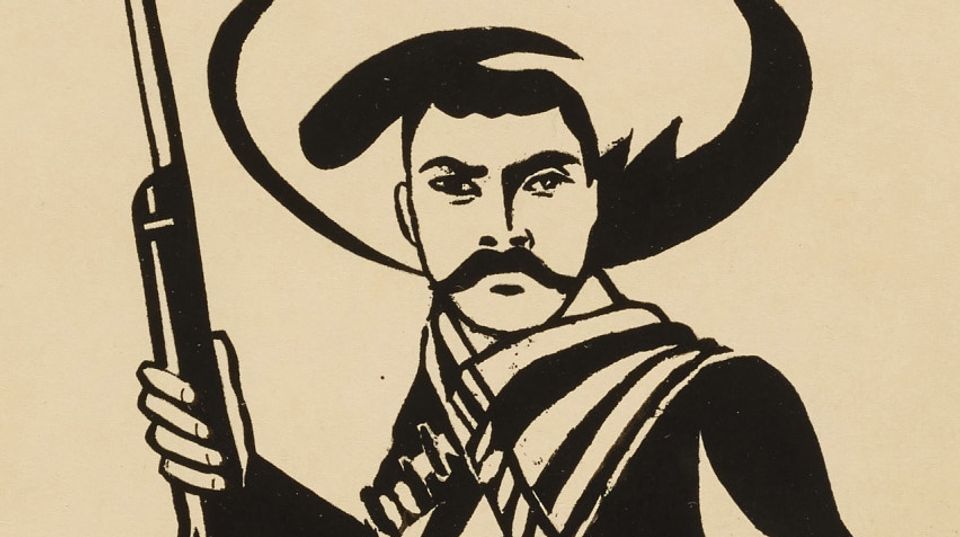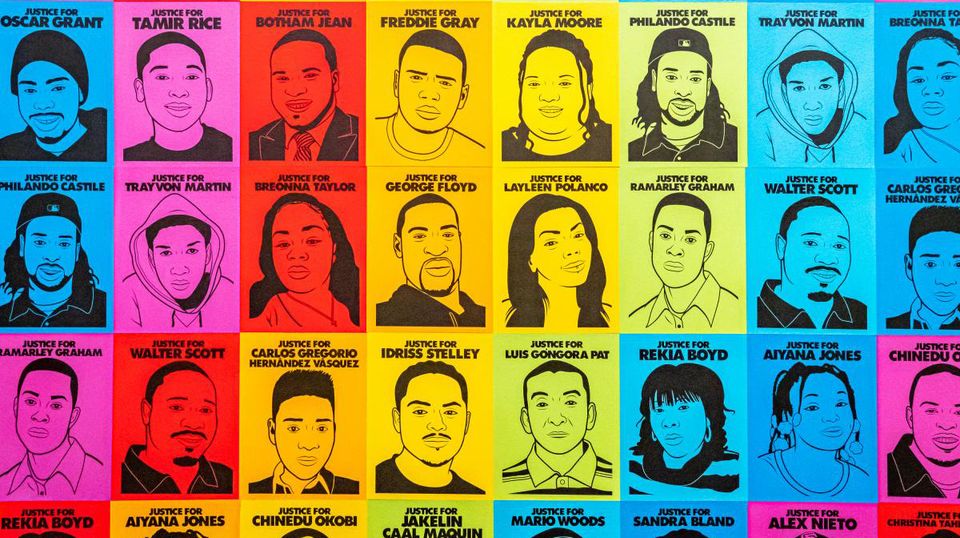Artwork Details
- Title
- Tierra o Muerte
- Artist
- Date
- 1967
- Location
- Not on view
- Dimensions
- 11 3⁄4 × 9 1⁄2 in. (29.8 × 24.1 cm)
- Copyright
- © 1967, Emanuel Martinez
- Credit Line
- Gift of the artist
- Mediums Description
- screenprint on manila folder
- Classifications
- Subjects
- Object — weapon — gun
- Object — weapon — sword
- Chicanx
- Dress — accessory — hat
- Figure male — waist length
- Object Number
- 1996.8
Artwork Description
En 1967, Martínez se afilió à la Alianza Federal de Mercedes (Federal Land Grant Alliance) en Nuevo México, encabezada por Reies López Tijerina. A partir de 1966, la Alianza luchó para reclamar los derechos à la tierra comunal garantizados de conformidad con el Tratado de Guadalupe Hidalgo (1848) que puso fin à la guerra entre México y los Estados Unidos. Para legitimar los objetivos de esta organización, el artista adoptó la figura de Emiliano Zapata, un héroe de la Revolución Mexicana y cambió la histórica frase del líder “Tierra y Libertad” a “Tierra o Muerte”. Al hacerlo, su grabado vincula la reforma agraria y la distribución de la riqueza de la Revolución Mexicana con la lucha del movimiento chicano contra las injusticias políticas y sociales. Creada en el momento culminante del activismo de la Alianza, cuando disponían de muy pocos fondos, Martínez imprimió la imagen en carpetas de manila donadas à la organización.
¡Imprimir la revolución! Auge e impacto de las obras gráficas chicanas, desde 1965 hasta hoy, 2020
Works by this artist (14 items)
Related Posts


















